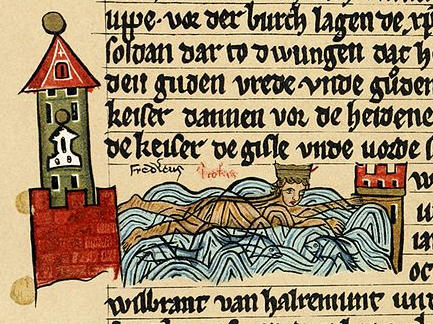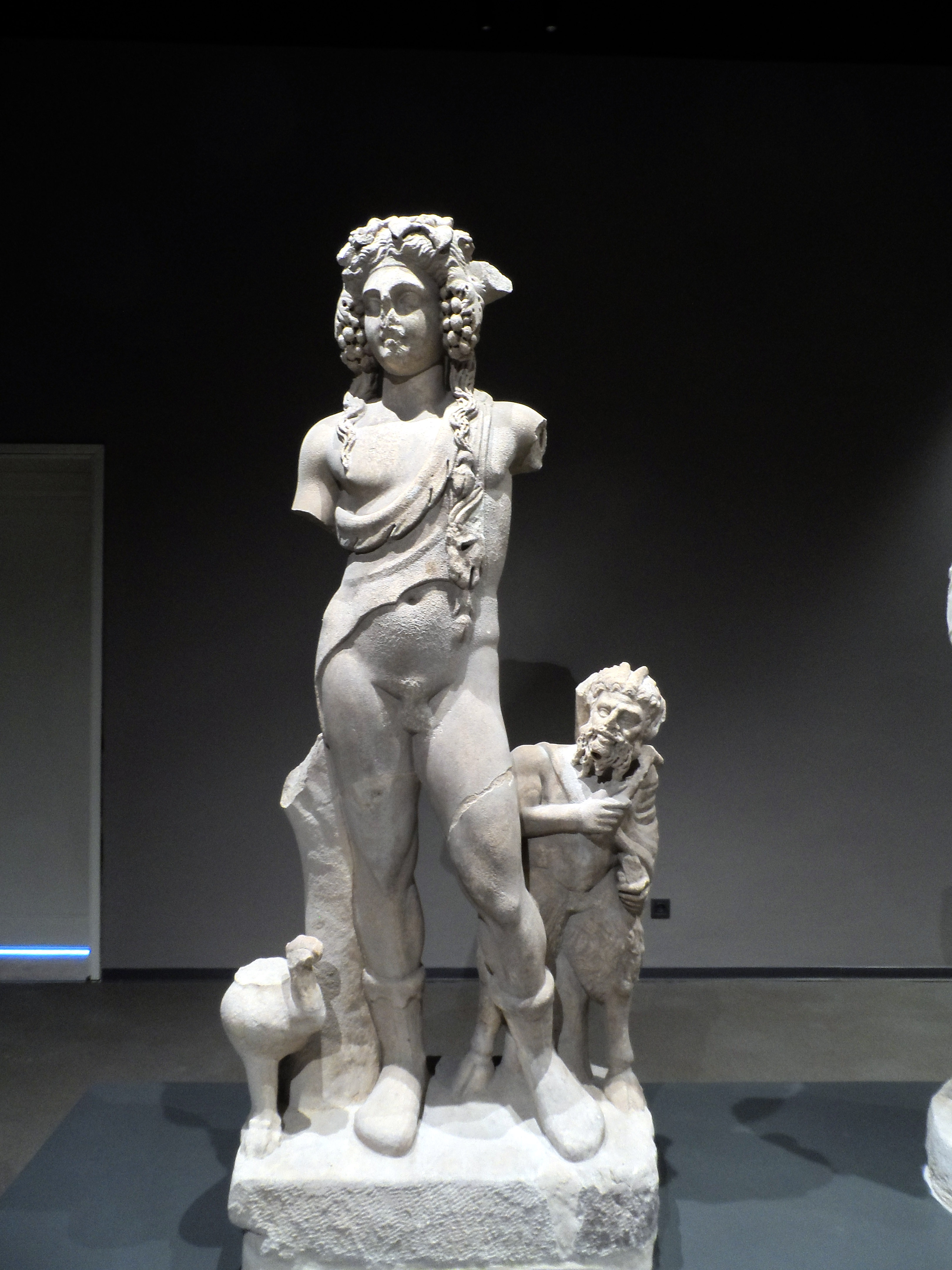|
Derinçay, Mut
Derinçay (formerly Hocantı) is a neighbourhood in the municipality and district of Mut, Mersin Province, Turkey. Its population is 191 (2022). It is situated in the valley of Göksu River to the north of Mut. The distance to Mut is and to Mersin is . The village is an old village founded by Turkmens. The oldest Ottoman documents about the village are of 15th century. Its former name Hocantı may either refer to a certain ''Hoca Enti'', who lived in the Karamanoğlu The Karamanids ( tr, Karamanoğulları or ), also known as the Emirate of Karaman and Beylik of Karaman ( tr, Karamanoğulları Beyliği), was one of the Anatolian beyliks, centered in South-Central Anatolia around the present-day Karaman P ... era, or a settlement in Turkestan. The bridge to the east of the village is a registered as a historical asset by the government. Derinçay economy depends on irrigated farming. Main crops are olives and fruits like apricot, plum, melon and figs. References ... [...More Info...] [...Related Items...] OR: [Wikipedia] [Google] [Baidu] |
Mut, Mersin
Mut is a town and district of Mersin Province in the Mediterranean region of Turkey. Mut is a rural district at the foot of the Sertavul Pass on the road over the Taurus Mountains from Ankara and Konya to the Mediterranean coast at Anamur or Silifke. Mut is known for its special apricot variety, ''Mut şekerparesi'', and a statue of a girl carrying a basket of them stands at the entrance to the town. The summer is hot and the people of Mut retreat to high meadows (so called yayla) even further up the mountainside. The forests up here are home to wild boar, and the Gezende reservoir on the Ermenek River is a welcome patch of blue in this dry district. The dam has a hydro-electric power station built in Romania. History The area has probably been inhabited since the time of the Hittites (2000 BC), and was later part of ancient Cilicia. Under the Roman Empire, the town was called Claudiopolis.''Alahan Monastery: A Masterpiece of Early Christian Architecture'', Michael Gough, The M ... [...More Info...] [...Related Items...] OR: [Wikipedia] [Google] [Baidu] |
Mersin Province
Mersin Province ( tr, ), formerly İçel Province ( tr, ), is a province in southern Turkey, on the Mediterranean coast between Antalya and Adana. The provincial capital and the biggest city in the province is Mersin, which is composed of four municipalities and district governorates: Akdeniz, Mezitli, Toroslar and Yenişehir. Next largest is Tarsus, the birthplace of Paul the Apostle. The province is considered to be a part of the geographical, economical and cultural region of Çukurova, which covers the provinces of Mersin, Adana, Osmaniye and Hatay. The capital of the province is the city of Mersin. Etymology The province is named after its biggest city Mersin. Mersin was named after the aromatic plant genus ''Myrsine'' ( el, Μυρσίνη, tr, mersin) in the family Primulaceae, a myrtle that grows in abundance in the area. The 17th-century Ottoman traveler Evliya Çelebi has recorded in his ''Seyahatnâme'' that there was also a clan named Mersinoğulları in ... [...More Info...] [...Related Items...] OR: [Wikipedia] [Google] [Baidu] |
Turkey
Turkey ( tr, Türkiye ), officially the Republic of Türkiye ( tr, Türkiye Cumhuriyeti, links=no ), is a list of transcontinental countries, transcontinental country located mainly on the Anatolia, Anatolian Peninsula in Western Asia, with a East Thrace, small portion on the Balkans, Balkan Peninsula in Southeast Europe. It shares borders with the Black Sea to the north; Georgia (country), Georgia to the northeast; Armenia, Azerbaijan, and Iran to the east; Iraq to the southeast; Syria and the Mediterranean Sea to the south; the Aegean Sea to the west; and Greece and Bulgaria to the northwest. Cyprus is located off the south coast. Turkish people, Turks form the vast majority of the nation's population and Kurds are the largest minority. Ankara is Turkey's capital, while Istanbul is its list of largest cities and towns in Turkey, largest city and financial centre. One of the world's earliest permanently Settler, settled regions, present-day Turkey was home to important Neol ... [...More Info...] [...Related Items...] OR: [Wikipedia] [Google] [Baidu] |
TÜİK
Turkish Statistical Institute (commonly known as TurkStat; tr, Türkiye İstatistik Kurumu or TÜİK) is the Turkish government agency commissioned with producing official statistics on Turkey, its population, resources, economy, society, and culture. It was founded in 1926 and has its headquarters in Ankara Ankara ( , ; ), historically known as Ancyra and Angora, is the capital of Turkey. Located in the central part of Anatolia, the city has a population of 5.1 million in its urban center and over 5.7 million in Ankara Province, maki .... Formerly named as the State Institute of Statistics (Devlet İstatistik Enstitüsü (DİE)), the Institute was renamed as the Turkish Statistical Institute on November 18, 2005. References External linksOfficial website of the institute National statistical services Statistical Organizations established in 1926 Organizations based in Ankara {{Sci-org-stub ... [...More Info...] [...Related Items...] OR: [Wikipedia] [Google] [Baidu] |
Göksu River
The Göksu ( Turkish for "sky water" also called ''Geuk Su'', ''Goksu Nehri''; la, Saleph, grc, Καλύκαδνος, translit=Calycadnus) is a river on the Taşeli plateau (Turkey). Both its sources arise in the Taurus Mountains—the northern in the Geyik Mountains and the southern in the Haydar Mountains. Their confluence is south of Mut. Course The river is 260 km long and empties into the Mediterranean Sea 16 km southeast of Silifke (in Mersin province). The delta of the Göksu, including Akgöl Lake and Paradeniz Lagoon, is one of the most important breeding areas in the Near East; over 300 bird species have been observed. Among others, flamingos, herons, bee-eaters, kingfishers, gull Gulls, or colloquially seagulls, are seabirds of the family Laridae in the suborder Lari. They are most closely related to the terns and skimmers and only distantly related to auks, and even more distantly to waders. Until the 21st century, m ...s, nightingales and Old Wo ... [...More Info...] [...Related Items...] OR: [Wikipedia] [Google] [Baidu] |
Mersin
Mersin (), also known as İçel, is a large city and a port on the Mediterranean Sea, Mediterranean coast of southern Turkey. It is the provincial capital of Mersin Province, Mersin (İçel) Province. It is made up of four municipalities and district governorates: Akdeniz, Mersin, Akdeniz, Mezitli, Toroslar and Yenişehir, Mersin, Yenişehir. As urbanisation continue towards the east, a larger metropolitan region combining Mersin with Tarsus, Mersin, Tarsus and Adana (the Adana-Mersin Metropolitan Area) is in the making with more than 3.3 million inhabitants. Mersin lies on the western side of the Çukurova, a geographical, economic and cultural region. It is an important hub for Turkey's economy, with Port of Mersin, Turkey's largest seaport located here. The city hosted the 2013 Mediterranean Games. As of the 2021 estimation, the population of the Adana-Mersin Metropolitan Area was 33,000 inhabitants of whom 1,064,850 lived in the Mersin area made up of the four urban district ... [...More Info...] [...Related Items...] OR: [Wikipedia] [Google] [Baidu] |
Oghuz Turks
The Oghuz or Ghuzz Turks (Middle Turkic languages, Middle Turkic: ٱغُز, ''Oγuz'', ota, اوغوز, Oġuz) were a western Turkic people that spoke the Oghuz languages, Oghuz branch of the Turkic languages, Turkic language family. In the 8th century, they formed a Turkic tribal confederation, tribal confederation conventionally named the Oghuz Yabgu State in Central Asia. The name ''Oghuz'' is a Common Turkic word for "tribe". Byzantine Empire, Byzantine sources call the Oghuz the Uzes (Οὐ̑ζοι, ''Ouzoi''). By the 10th century, Islamic sources were calling them Muslim Turkmens, as opposed to Tengrist or Buddhist. By the 12th century, this term had passed into Byzantine usage and the Oghuzes were overwhelmingly Muslim. The term "Oghuz" was gradually supplanted among the Turks themselves by the terms ''Turkmen'' and ''Turkoman (ethnonym), Turcoman'', ( ota, تركمن, Türkmen or ''Türkmân'') from the mid-10th century on, a process which was completed by the beginn ... [...More Info...] [...Related Items...] OR: [Wikipedia] [Google] [Baidu] |
Ottoman Empire
The Ottoman Empire, * ; is an archaic version. The definite article forms and were synonymous * and el, Оθωμανική Αυτοκρατορία, Othōmanikē Avtokratoria, label=none * info page on book at Martin Luther University) // CITED: p. 36 (PDF p. 38/338) also known as the Turkish Empire, was an empire that controlled much of Southeast Europe, Western Asia, and Northern Africa between the 14th and early 20th centuries. It was founded at the end of the 13th century in northwestern Anatolia in the town of Söğüt (modern-day Bilecik Province) by the Turkoman tribal leader Osman I. After 1354, the Ottomans crossed into Europe and, with the conquest of the Balkans, the Ottoman beylik was transformed into a transcontinental empire. The Ottomans ended the Byzantine Empire with the conquest of Constantinople in 1453 by Mehmed the Conqueror. Under the reign of Suleiman the Magnificent, the Ottoman Empire marked the peak of its power and prosperity, as well a ... [...More Info...] [...Related Items...] OR: [Wikipedia] [Google] [Baidu] |
Karamanoğlu
The Karamanids ( tr, Karamanoğulları or ), also known as the Emirate of Karaman and Beylik of Karaman ( tr, Karamanoğulları Beyliği), was one of the Anatolian beyliks, centered in South-Central Anatolia around the present-day Karaman Province. From the middle 1300s until its fall in 1487, the Karamanid dynasty was one of the most powerful beyliks in Anatolia. History The Karamanids traced their ancestry from Hodja Sad al-Din and his son Nure Sufi Bey, who emigrated from Arran (roughly encompassing modern-day Azerbaijan) to Sivas because of the Mongol invasion in 1230. The Karamanids were members of the Salur tribe of Oghuz Turks. According to Muhsin Yazıcıoğlu and others, they were members of the Afshar tribe,Cahen, Claude, ''Pre-Ottoman Turkey: A General Survey of the Material and Spiritual Culture and History c. 1071–1330'', trans. J. Jones-Williams (New York: Taplinger, 1968), pp. 281–2. which participated in the revolt led by Baba Ishak and afterwards ... [...More Info...] [...Related Items...] OR: [Wikipedia] [Google] [Baidu] |
Turkestan
Turkestan, also spelled Turkistan ( fa, ترکستان, Torkestân, lit=Land of the Turks), is a historical region in Central Asia corresponding to the regions of Transoxiana and Xinjiang. Overview Known as Turan to the Persians, western Turkestan has also been known historically as Sogdia, "Ma wara'u'n-nahr" (by its Arab conquerors), and Transoxiana by western travelers. The latter two names refer to its position beyond the River Oxus when approached from the south, emphasizing Turkestan's long-standing relationship with Iran, the Persian Empires, and the Umayyad and Abbasid Caliphates. Oghuz Turks (also known as Turkmens), Kyrgyzs, Uzbeks, Kazakhs, Khazars, Uyghurs and Hazaras are some of the Turkic inhabitants of the region who, as history progressed, have spread further into Eurasia forming such Turkic nations as Turkey, and subnational regions like Tatarstan in Russia and Crimea in Ukraine. Tajiks and Russians form sizable non-Turkic minorities. It is subdivided into A ... [...More Info...] [...Related Items...] OR: [Wikipedia] [Google] [Baidu] |




